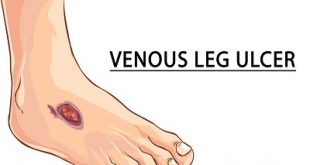What are Vocal Cord Nodules?
Vocal cord nodules (referred to as “vocal fold” nodules by physicians) are growths that form on the vocal cords. These bumps are benign (non-cancerous) and are similar to calluses that can form on the hands. Nodules affect girls and boys of any age, and are a common cause of voice issues in both children and adults. Vocal cord nodules are also called “Singer’s nodules,” as people who use their voice regularly may inadvertently ‘abuse’ their vocal cords and cause the formation of these growths and related voice issues.
What are the causes and risk factors of Vocal Cord Nodules?
Your vocal cords, also called vocal folds, are V-shaped bands of tissue that run down the middle of your voice box. When you talk or sing, air from your lungs rushes up through your vocal cords and makes them vibrate open.
If you overuse your voice or use it incorrectly, you can irritate your vocal cords. Over time, the irritated areas harden until they have the texture of little callouses. They’ll continue to grow if you don’t rest your voice.
These growths can prevent your vocal cords from vibrating normally. A lack of vibration will change the pitch and tone of your voice.
Nodules typically affect people who sing or talk a lot, such as:
- Cheerleaders
- Coaches
- Radio hosts
- Salespeople
- Teachers
- Preachers
Overuse isn’t the only reason people get vocal nodules. A few other possible causes include:
- Smoking
- Regular alcohol use
- Sinusitis
- Allergies
- Tensing your muscles when you talk
- Side effects from medication
- Hypothyroidism
Anyone can get vocal nodules, including children. But these growths are more likely to form in women between the ages of 20 and 50 and in boys. The increased risk in these groups of people may have to do with the size of their larynx.
Nodules are also a common problem among singers.
Symptoms of Vocal Cord Nodules
Symptoms of nodules vary based on your vocal demands.
If you are a vocational voice user (i.e., someone who uses their voice for their living, such as a singer, actor, voiceover artist, etc), you will possibly notice:
- Hoarseness in your speaking voice
- Hoarseness (irregular, inconsistent quality) in your professional voice (singing, voiceover, etc)
- Decreased range (no longer hitting higher notes easily)
- Inability to sing quietly
- Inability to hold a pitch steady
- Decreased color or vibrancy of tone
- Vocal fatigue (feeling worn out after a performance)
- Throat discomfort, pain, or tightness
- Neck pain
Self-Check
Try to sing “Happy birthday” as quietly as you can. Are you able to hit all notes easily and quietly?
If not, you may have nodules or another vocal problem.
If you are an avocational voice user (i.e., not someone whose voice is their livelihood, such as a doctor, teacher, lawyer, etc), you will possibly notice:
- Vocal fatigue (feeling worn out after a performance)
- Throat discomfort, pain, or tightness
- Neck pain
- Hoarseness in your speaking voice
Vocal Cord Nodules Complications
There are complications to nodules, particularly when the diagnosis is made too late. Complications include:
- Permanent hoarseness
- Scarring
- Painful phonation/voice use
- Loss of vocal range
How can I avoid having a complication?
Early diagnosis is the key to avoiding these complications. This means, for a singer, coming in for evaluation as soon as you are hoarse.
Singers incorrectly assume it is okay to be hoarse after a long performance or rehearsal. It is not normal to be hoarse at these times; hoarseness is an indication that something is wrong. Evaluation at this time is critical to ensure reversibility.
Diagnosis of Vocal Cord Nodules
Our voice care team at UT Southwestern includes fellowship-trained laryngologists and speech-language pathologists who conduct a thorough evaluation, including:
- Physical exam, with an inspection of the vocal cords
- Review of personal medical history
- Discussion of symptoms
Other tests we typically use include:
- Laryngoscopy: An exam using a narrow tube, either flexible or rigid, with a light and camera, inserted through the nose
- Videostroboscopy: An exam using a telescope-like camera with a flashing light that provides a magnified, slow-motion view of the vocal cords as they vibrate
- Sound (acoustic) analysis: Computer analysis that identifies abnormalities in the sounds produced by the vocal cords
Treatments for Vocal Cord Nodules
Voice Therapy
Voice therapy promotes healing of your vocal cord injury and helps you avoid future injury. Our speech pathologists guide children and adults through vocal exercises to improve breathing, reduce throat strain, and find optimal resonance, pitch, and volume for strong, healthy speaking. Our singing voice therapists help professional vocal performers improve vocal range, endurance, and voice quality. This therapy is often an essential part of voice recovery that’s not typically available at non-specialist ENT clinics.
Microsurgery
In some cases, surgery may be recommended to remove noncancerous vocal cord nodules, cysts, or polyps. While you are under general anesthesia, tiny surgical instruments are inserted through your mouth into your throat. The surgeon makes a very small incision away from the vibrating edge of your vocal cord, and a tiny flap of tissue is lifted so the growth can be removed. Also known as “phonomicrosurgery,” this technique reduces the risk of scarring and offers the best voice outcomes. Voice therapy after microsurgery is essential for optimal recovery.
Vocal Cord Laser Surgery
Some types of vocal cord lesions can be removed with a laser. This procedure can be done in a doctor’s office while you are awake or in the operating room under general anesthesia. The surgeon inserts a thin scope into your nose and throat and uses laser beams to shrink the lesion. Voice rest and voice therapy are usually necessary after this procedure. Some patients need a second procedure to fully remove the vocal cord lesion.
Medical Management
Your laryngologist may prescribe medications to treat chronic cough, acid reflux, allergies, and other medical problems that may contribute to voice disorders. When needed, your laryngologist will refer you to the appropriate specialist for further treatment of these conditions.
How can I prevent a vocal cord lesion?
If you have a vocal cord disorder, you can:
- Stop smoking, and avoid being in smoke-filled rooms.
- If you have hypothyroidism, sinusitis, allergies, or reflux, get treatment.
- Avoid excess use of alcohol and limit caffeine intake.
- Drink plenty of water.
- Get a good night’s sleep.
- Avoid excessive talking or speaking loudly without adequate vocal rest.
- Use a microphone.
- Use a humidifier in your home.
- Warm up your voice before singing or prolonged speaking.
- Rest your voice in anticipation of future speaking obligations.
- Avoid singing or excessive talking if you have an upper respiratory infection.
- Wash your hands often.
- Use stress reduction techniques, cognitive therapy, or yoga to lessen muscle tension.
 Diseases Treatments Dictionary This is complete solution to read all diseases treatments Which covers Prevention, Causes, Symptoms, Medical Terms, Drugs, Prescription, Natural Remedies with cures and Treatments. Most of the common diseases were listed in names, split with categories.
Diseases Treatments Dictionary This is complete solution to read all diseases treatments Which covers Prevention, Causes, Symptoms, Medical Terms, Drugs, Prescription, Natural Remedies with cures and Treatments. Most of the common diseases were listed in names, split with categories.







